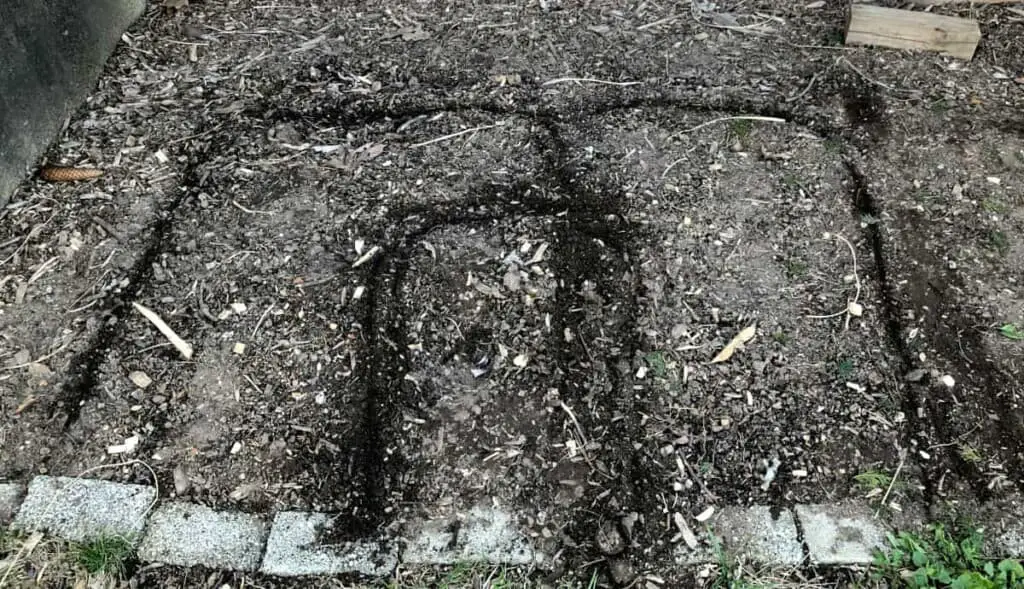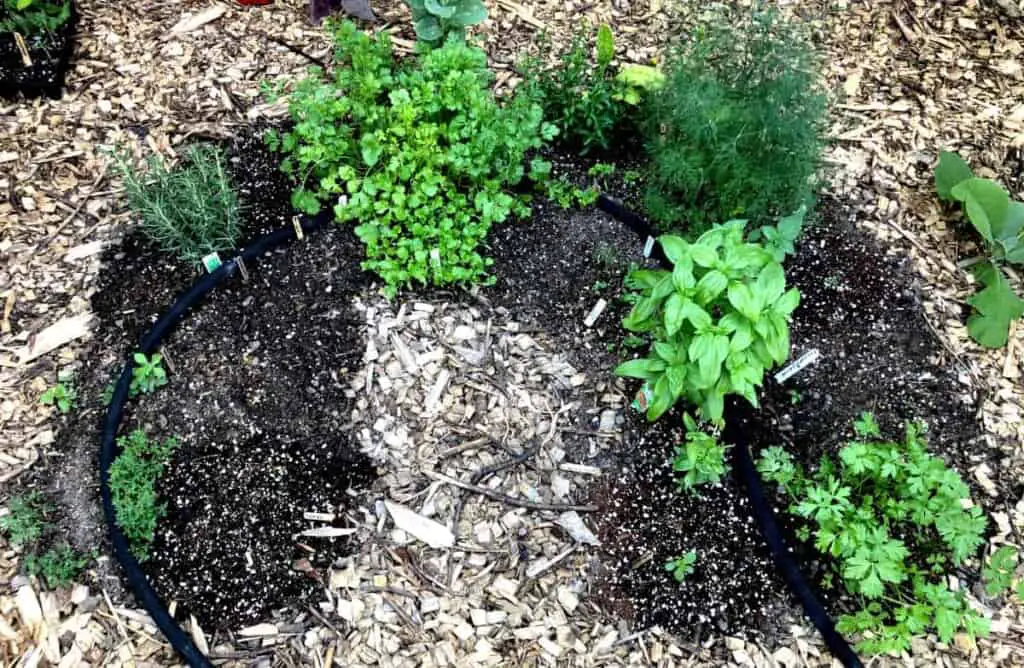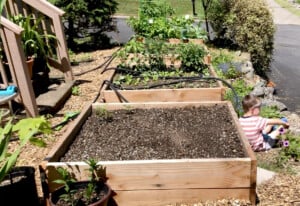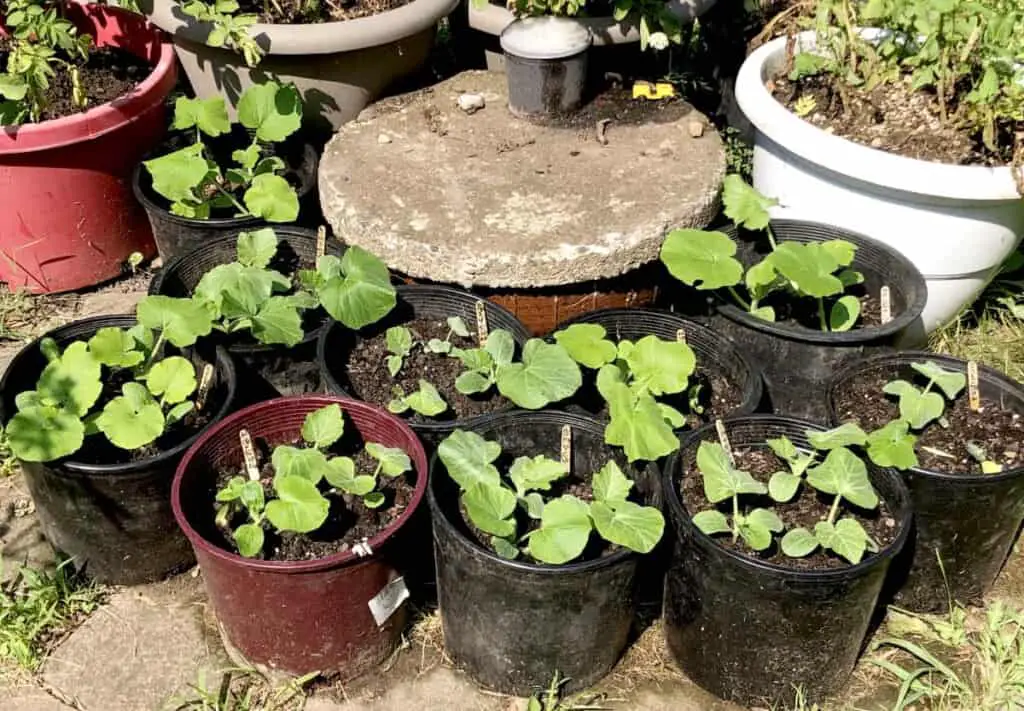Planning a vegetable garden is a totally different game than planning a flower garden or designing a lovely yard to sit at. There is a number of very important rules to vegetable garden planning to make your planting successful. Below I have listed and explained the most important rules that will lead you to a successful vegetable garden.
A successful vegetable garden plan must include a sunny location, a level lot, close to the water source, close to home for easy access, nutritious and well-draining soil without obstacles such as weeds, rocks, and protection from pests.

A sunny location is a key to a fruitful pantry-stocking garden
Most vegetables like plenty, and I mean plenty of sunshine. When planning a vegetable garden, a location that gets at least 8 hours of sun and more will work best. Being limited with my growing space, I once planted a garden in a location with 6 or fewer hours of sun and even though my plants had green leaves, they didn’t have enough energy to produce the yields. I had a green garden but without much harvest. I had to relocate my garden to another location that provided 8 and more hours of sun, even though it was not as close and as easy to access as the location that provided less sun.
Most of the time the best sun exposure gets to the south side with garden beds laid out from east to west. However, this might not work for all properties as we have to take into consideration the obstacles each property faces. Some of us might have a house or neighbor’s trees that cast shade or anything that is not possible to move and we have to work around it. Therefore, pick a sunny day and walk into a location where you wish to establish your garden at least three times a day, in the morning, noon and afternoon, and locate where is the most sun during those times. This will allow you to see how the sun travels through your property and thus pick the location that provides the most sunshine.
If possible, pick a level lot
A level lot garden is ideal and one day I hope to have one. A level lot garden drains best while allowing the soil to soak as much water as you put into it without losing any. It is easiest to maintain when planting and working in it.

I, however, don’t have a level lot therefore I chose a raised bed gardening style which allows me to level my garden bed on any slope by partially burying them in the ground and thus leveling them as much as possible.
Place your garden close to a water source
Water is one of the most important elements when caring for the garden. You will use water in many cases on a daily basis. To save yourself loads of work make sure your water source is in close proximity to the garden. If your garden is far from the water you will have to carry all the water to your garden either by hand or by a hose. The closer the water, the less workload for you. Also, you will not neglect to water your garden on demand when water is close at hand. You might neglect correct watering if your water source is too far or the watering process is too complicated.
Place your garden close to your house with easy access
If you place your pantry stocking garden close to your house with easy access you will naturally spend much time in the garden and it will be easier for you to maintain it. By maintaining it I mean you will get to weed your garden more often simply because you will be close enough to stop by often. If your garden is too far from the house where you spent most of your time when home, you will not be able to find enough time to check on plants as often. You will have to make time to get into your garden and many times our work, caring for children or even health might not allow us as much time as our garden would need. If your garden is close to you, you will pass it by often, you will be able to notice from a short distance when it’s time to weed, water, or even when pest damage occurs and you will need to act fast to protect them.

Easy access into your garden should serve you well when you approach it pushing a bulky and heavy wheelbarrow full of dirt, entering your garden space carrying buckets full of compost, and it should be easy to carry out harvest and cutouts when cleaning after the growing season.
If you have many obstacles on the way to the garden location, you will not be much efficient and you will wear yourself out having to think extra. For example, if you have multiple tree stumps to maneuver around while pushing a heavy wheel barrel you will get tired quickly. If there are multiple obstacles on your way to the harden such as many steps, trees, tree stumps, winding roads, and large rocks you will get weary just approaching the growing space. Rather than putting all the strength just entering your garden, make it easy for yourself and make sure the entrance into the garden is easily accessible so you can be more efficient.
If you have to walk long distances and get through many obstacles you might start to neglect necessary weeding, watering, and caring, and your garden might not be brought to its full potential. But this too comes with experience. For me, to get to my garden I have to concur 6 steps or walk a longer steep route with 5 feet elevation. It seems not much if you do it only one time, but if you have to climb those 6 stairs 10 times it accumulates to 60 steps! If you walk the longer steep route 10 times with 5 feet elevation it equals 50 feet high mountain. And if you carry with you a shovel or harvest, or bucket of soil it gets really annoying and costs me extra strength. However, that location is the only location on my property that gets more than 8 hours of sunshine a day and is large enough to have most of the garden beds in one spot. This is all I have to work with so I make it work. My garden forces me to work smarter, not harder.
Choose the right type of gardening for you
There are three types of gardening most often used by home gardeners. Those are inground gardening, raised bed gardening, and container gardening.
An inground garden type allows you to plant directly in the ground. It is the most suitable type if you have a level lot and quite good native soil to start with.
Raised bed gardening is for those with an uneven lot, not very good native soil, or for those who are not able to bend all the way to the ground level.
Container gardening works best for home gardeners that have a growing lot without any native soil available, have very small grow space, or plan to place their garden on a patio, driveway, or balcony. Each garden type comes with its benefits and challenges. I chose the raised bed gardening because this type works best for my vegetable lot. To learn more about each garden type in depth, you can visit my other article “What is the best type of garden for vegetables?” that will help you to choose the right one for you.

What is the best type of garden for vegetables?
Measure the area
While assessing the future garden spot, have in mind its size. Is the area you are looking at large enough to start a garden? Is it large enough to expand in case you chose to? Measure the area and see how much space it has to offer. In general, you would need at least 200 square feet per person. Multiply it by the number of your loved ones you intend to grow the produce for and you will get the size of the garden you need.
If you are a first-time gardener, I would recommend starting small at first and then expanding according to your abilities as you learn. If you deal with a lot like mine where no one area is big enough to accommodate the whole garden space, then you will have to spread it out into multiple growing spaces. Each of us has to work with what we have and accommodate our needs to our abilities.
Lastly, clear and prepare the area
Once you are set on the location it’s time to clear it and prepare it for growing your pantry staples.
By clearing it, remove every obstacle like removing grass and weeds with roots, rocks, trees, and stumps if necessary.
If you can afford it, you can place a fence around the area to keep larger pests out of your precious future food.
Once the location is cleared of the obstacles, it’s time to install your garden according to the type you chose, eighter inground, raised beds, or container garden.
Start a compost pile
Compost is black gold for your garden. It is one of the main components that will feed your plants and bring them to fruition. From my own experience, it is hard to find good and suitable compost. I found out that my own compost works best for my plants.
Compost is a nutrient-rich dirt-like material made of fully decomposed organic matter. The decomposing process takes time, therefore starting a compost pile should be one of the first steps to take when starting a garden. Proper compost is made by mixing browns (carbon) and greens (nitrogen). A rule of thumb for successful composting is to combine two-thirds of brown matter with one-third of green matter.
Brown matter includes dry leaves, dirt, newspaper, cardboard, egg carton, dry plant clippings, wood chips, sticks, hay, straw, sawdust, paper towels, toilet paper rolls, dried grass, wood ash, and eggshell.
Green matter includes vegetable trimmings, vegetable and fruit scraps, green leaves, fresh grass clippings, tea bags, animal manure, houseplants, weeds, old flowers, and garden waste.
There are many ways to make compost. I make a pile of cold compost and I also do trench composting. In my cold compost pile, I simply mix all the brown and green matter that my yard and kitchen provide me with. I do not turn my compost pile, I let the matter decompose on its own. I do trench composting only during winter months when my garden is bare and I simply bury kitchen scraps directly in my raised garden beds. My garden beds are bare for almost 5 months of the year from November-March, during those months I bury as many kitchen scraps as I can, and they still have enough time to decompose and make my garden soil fertile. Here, you go. Now you have the knowledge and steps necessary to plan your vegetable garden. Please take these steps as a guide but don’t feel limited by them. If some of the steps need to be adjusted according to your needs, just do so and work with what you have available at the time. Good luck gardening!
Below, I have provided you with links to my other very helpful articles that will guide you step by step to execute your garden planning in the most successful way.
How to start a vegetable garden

